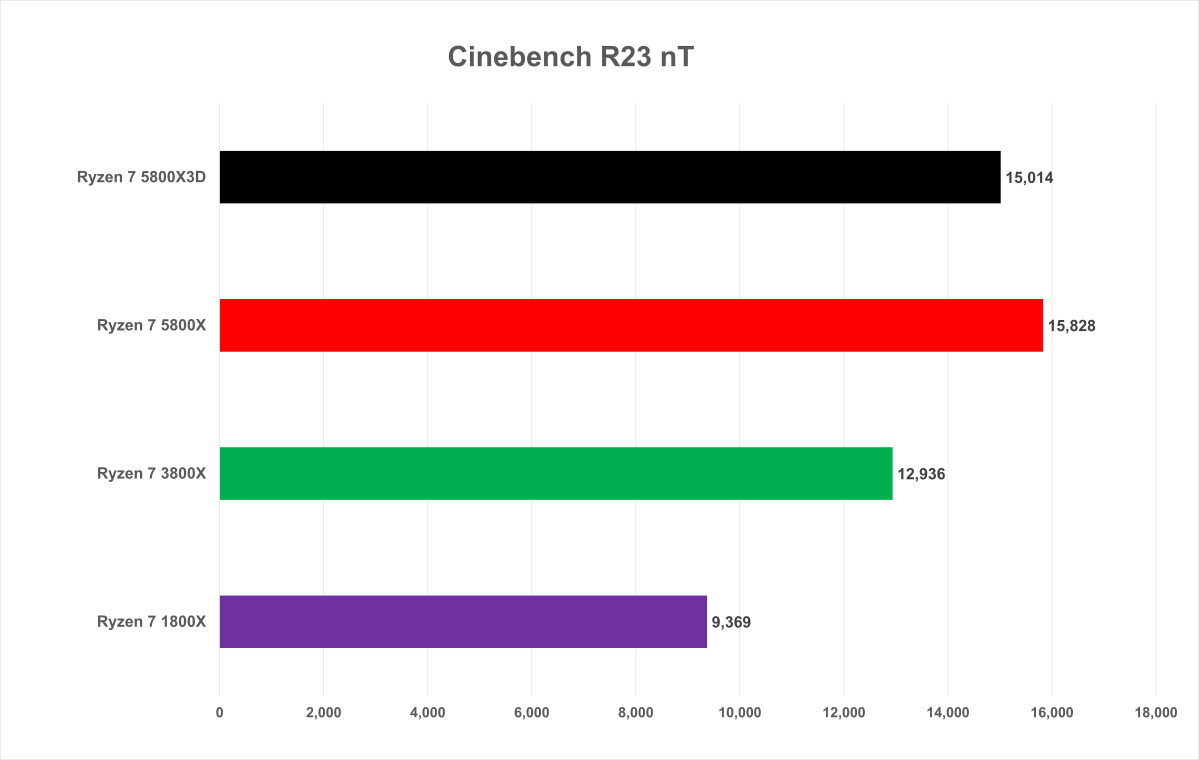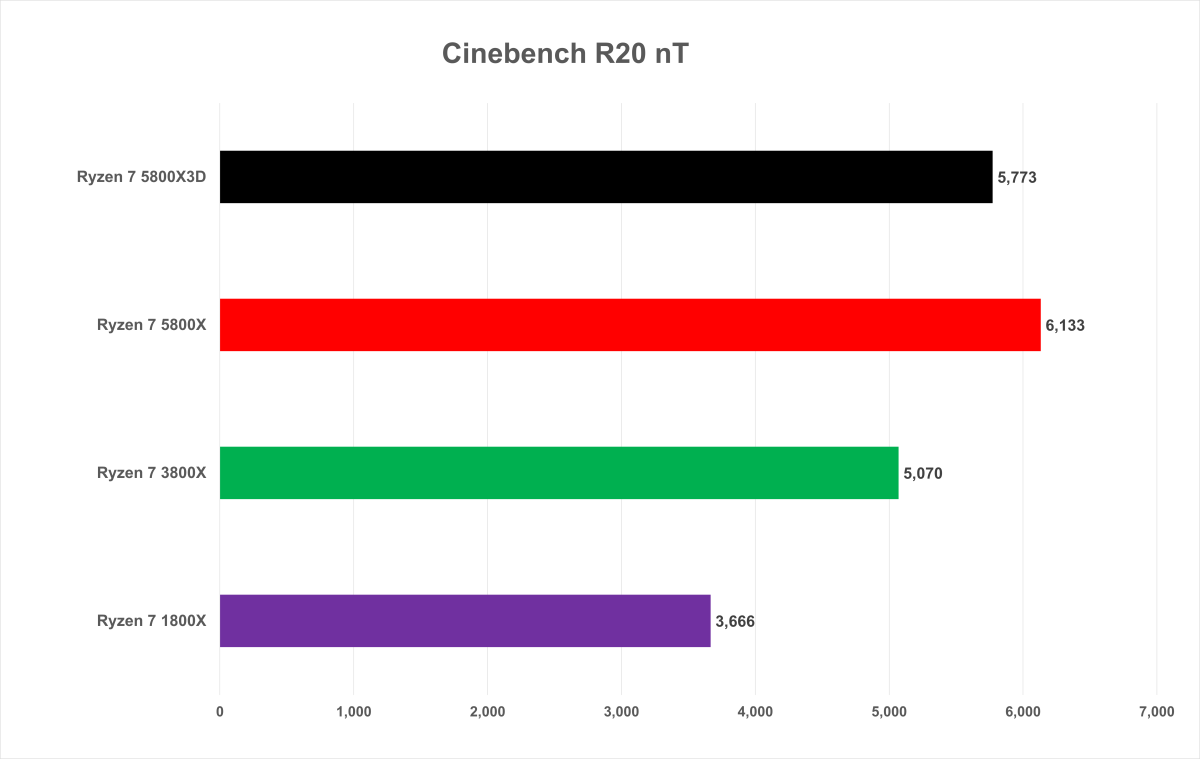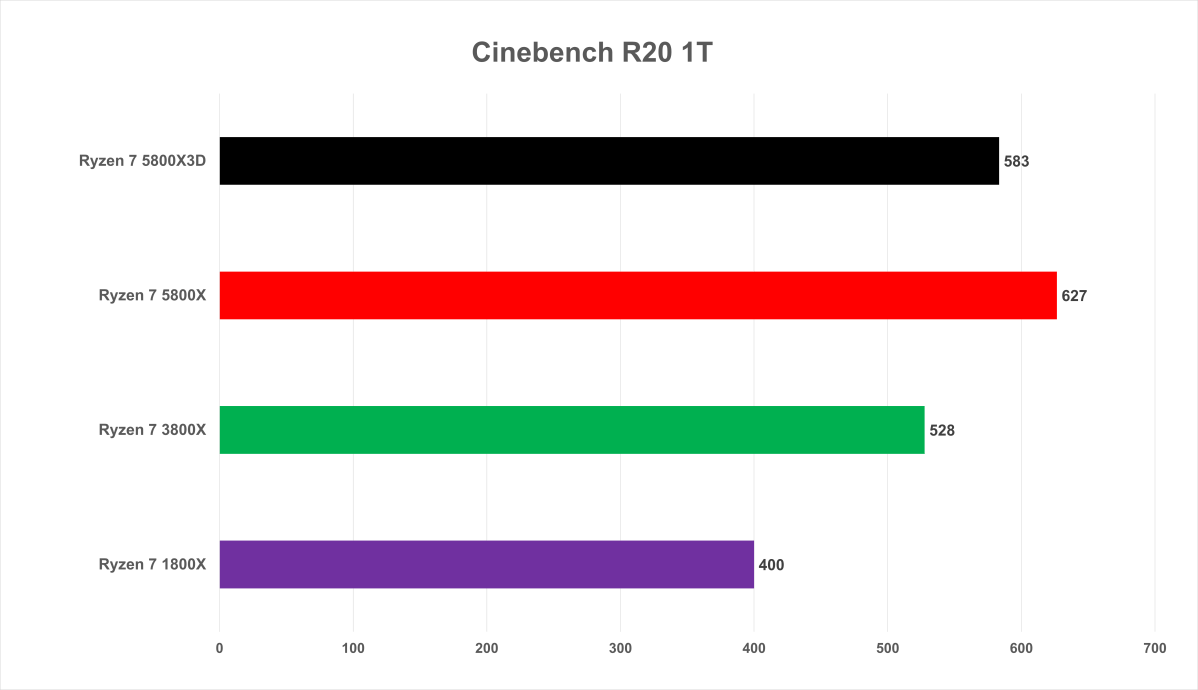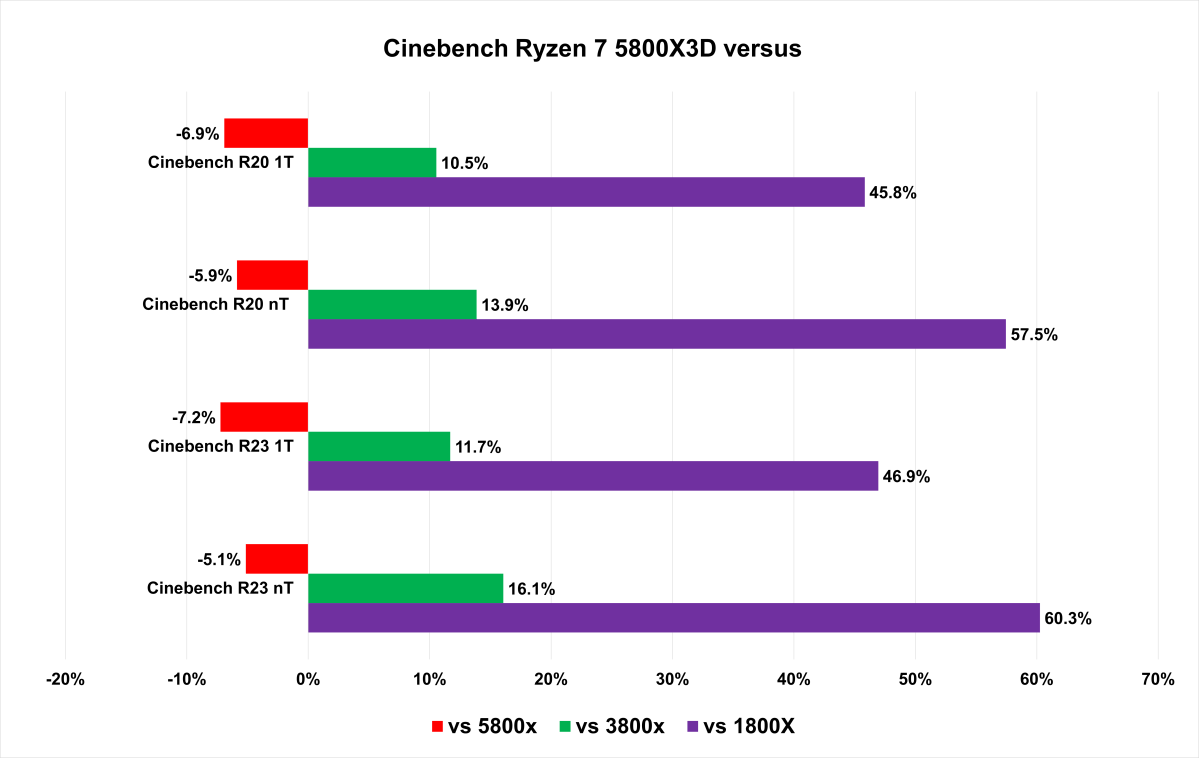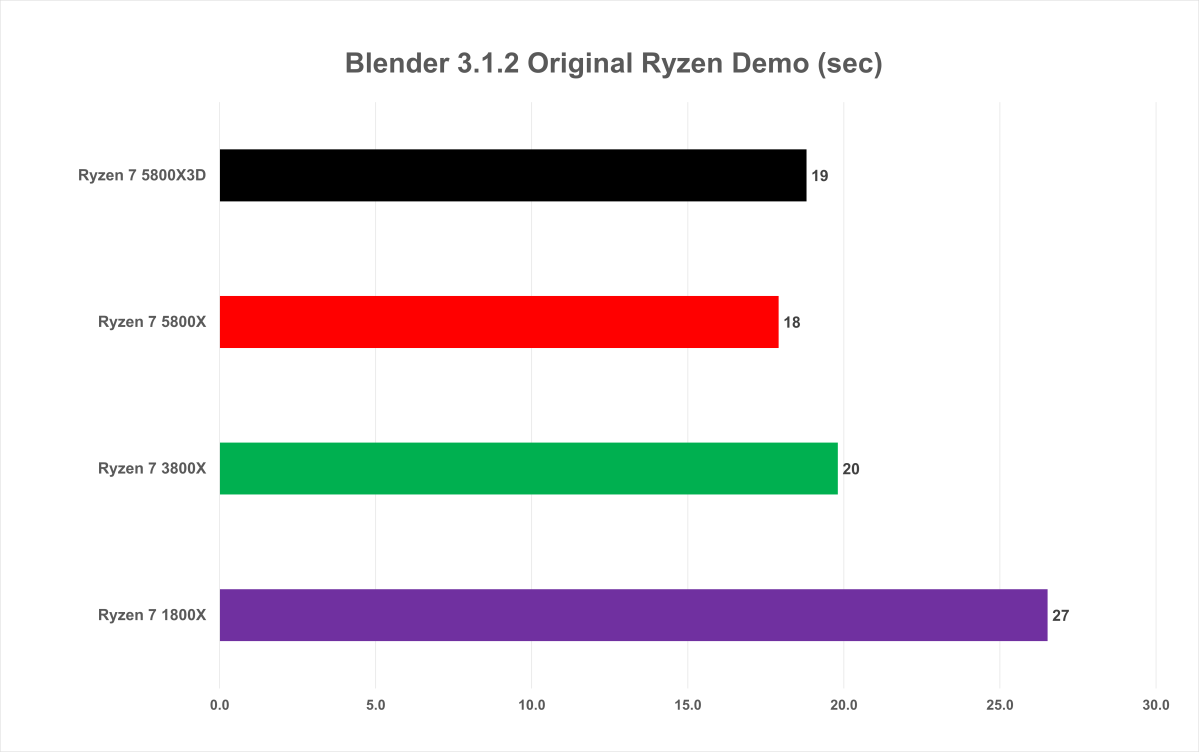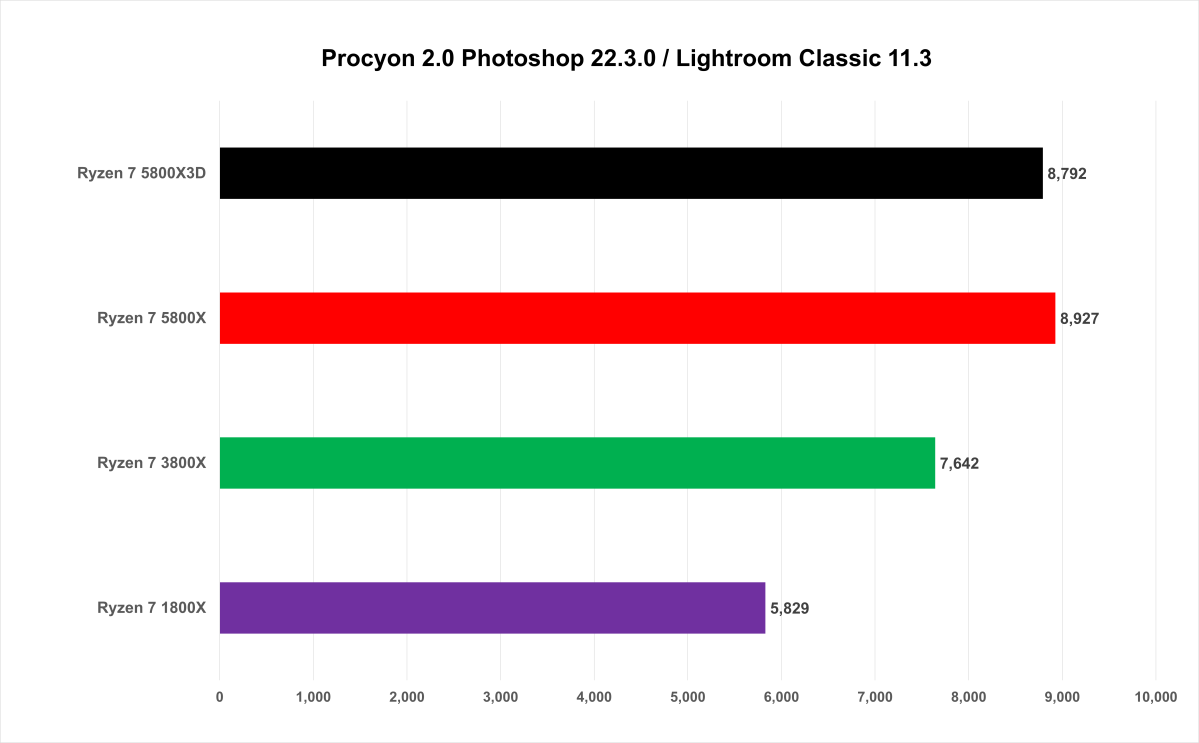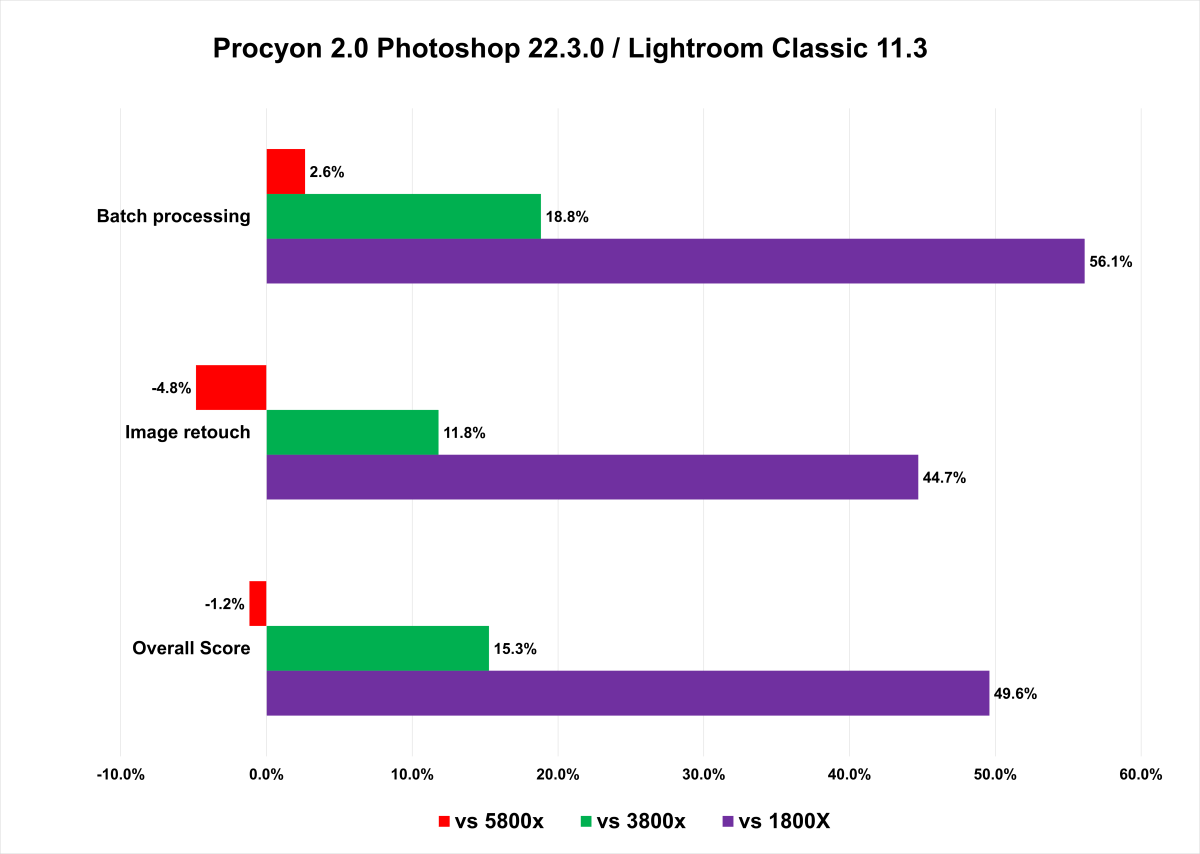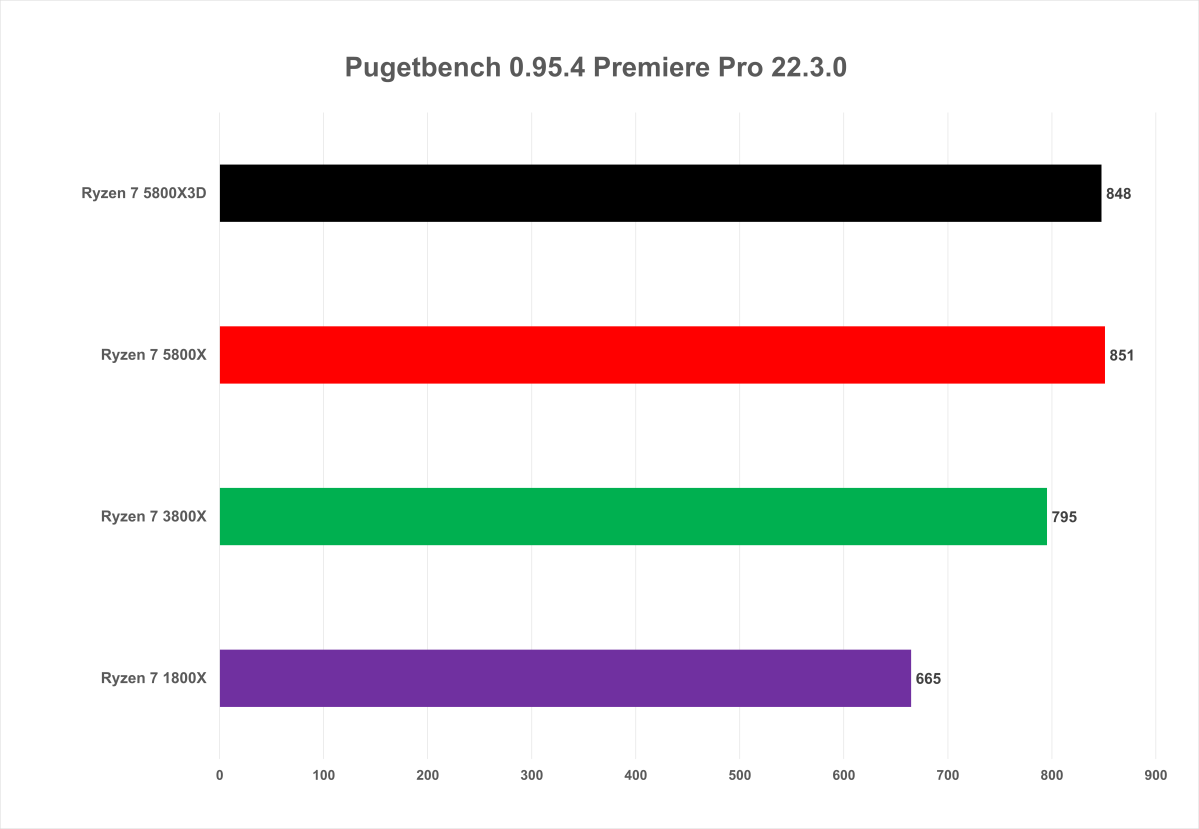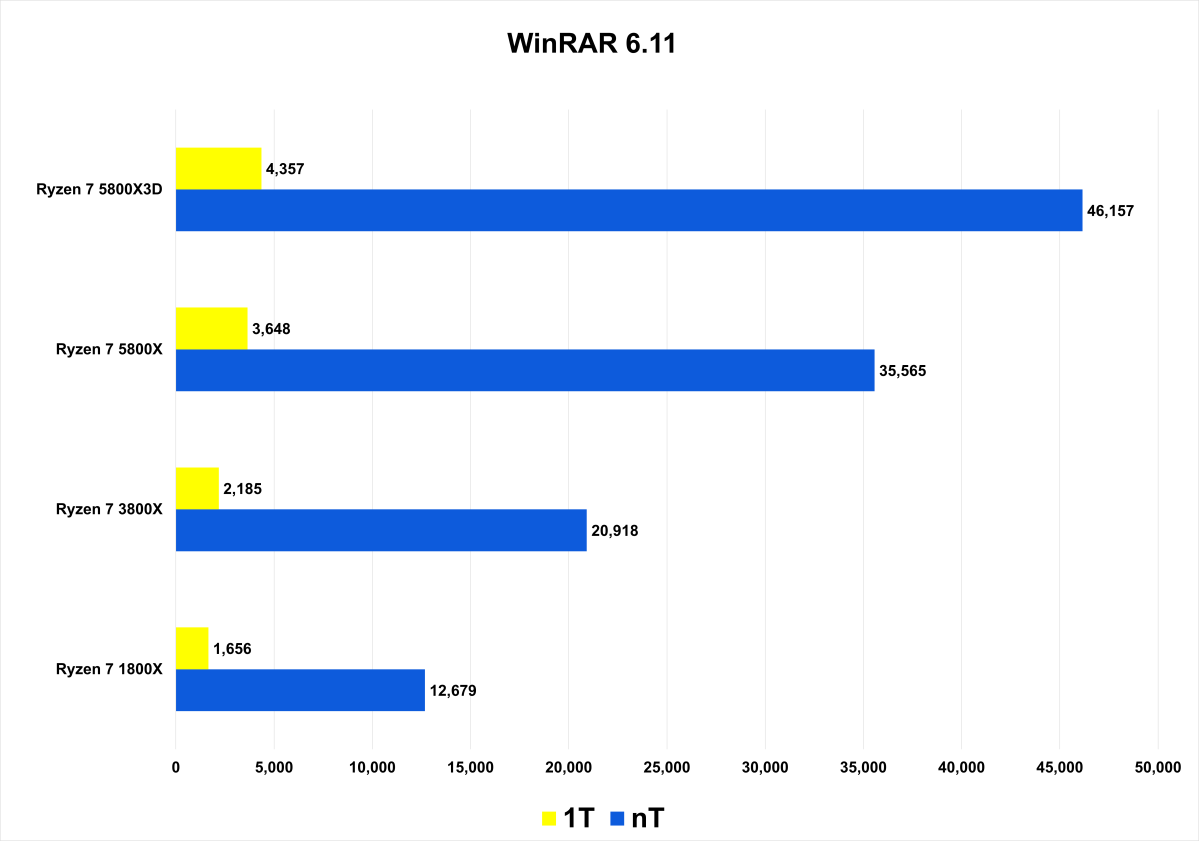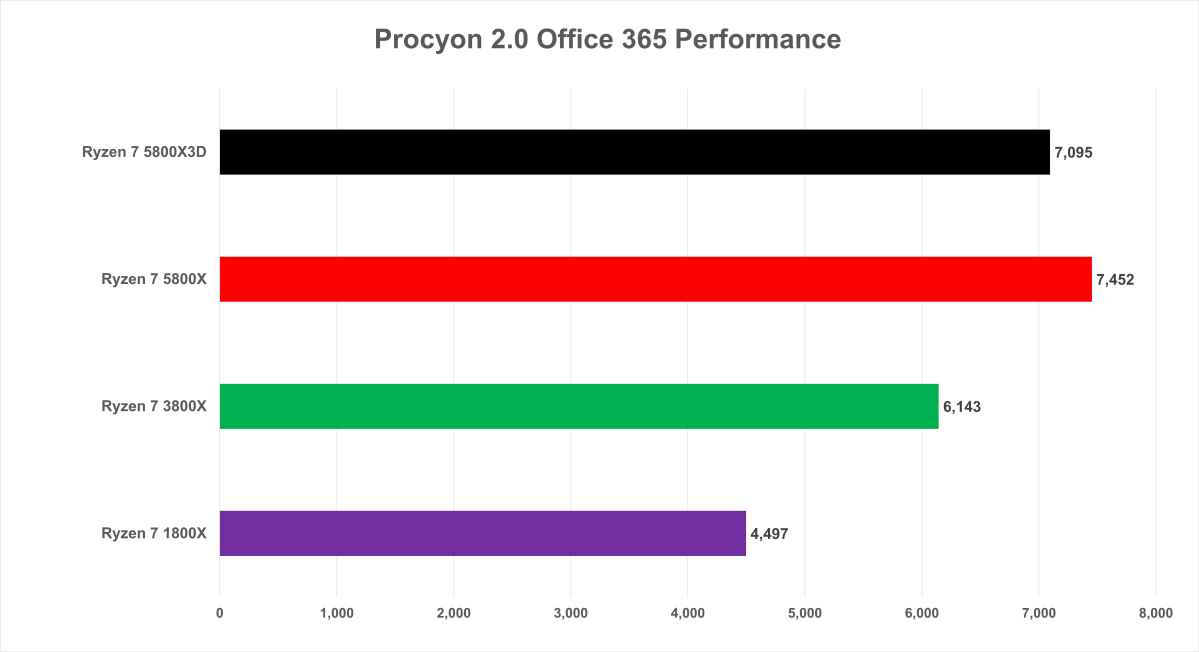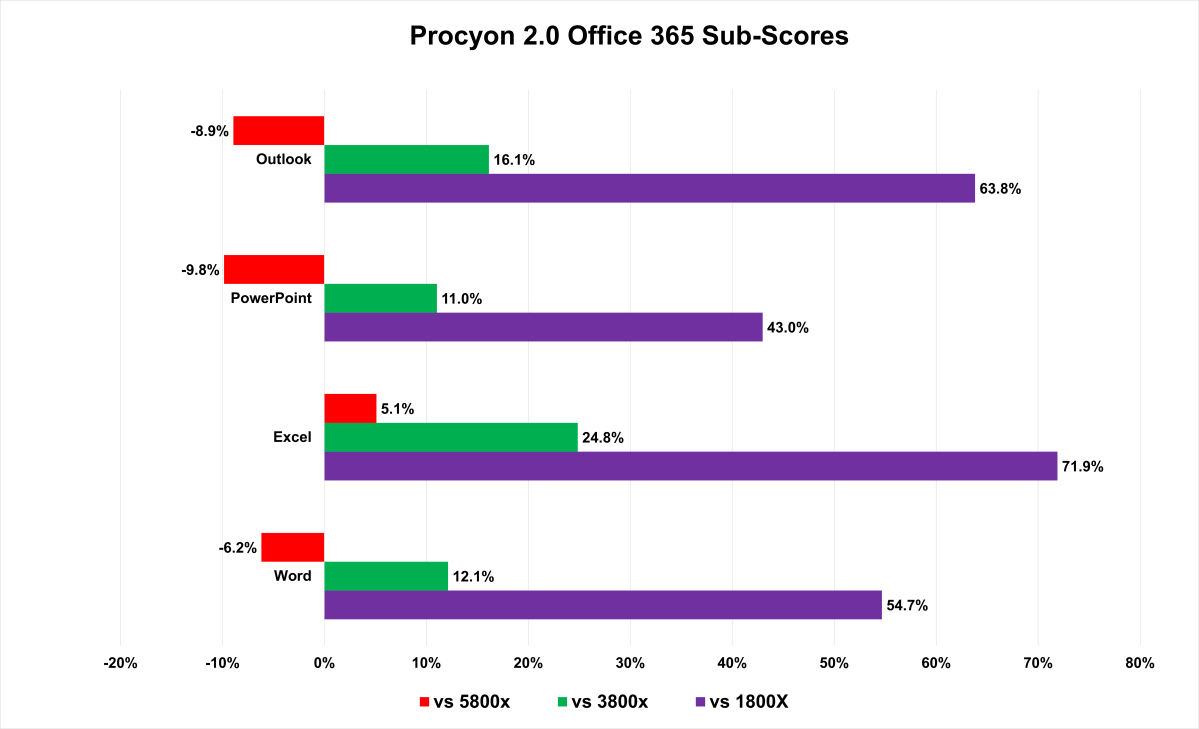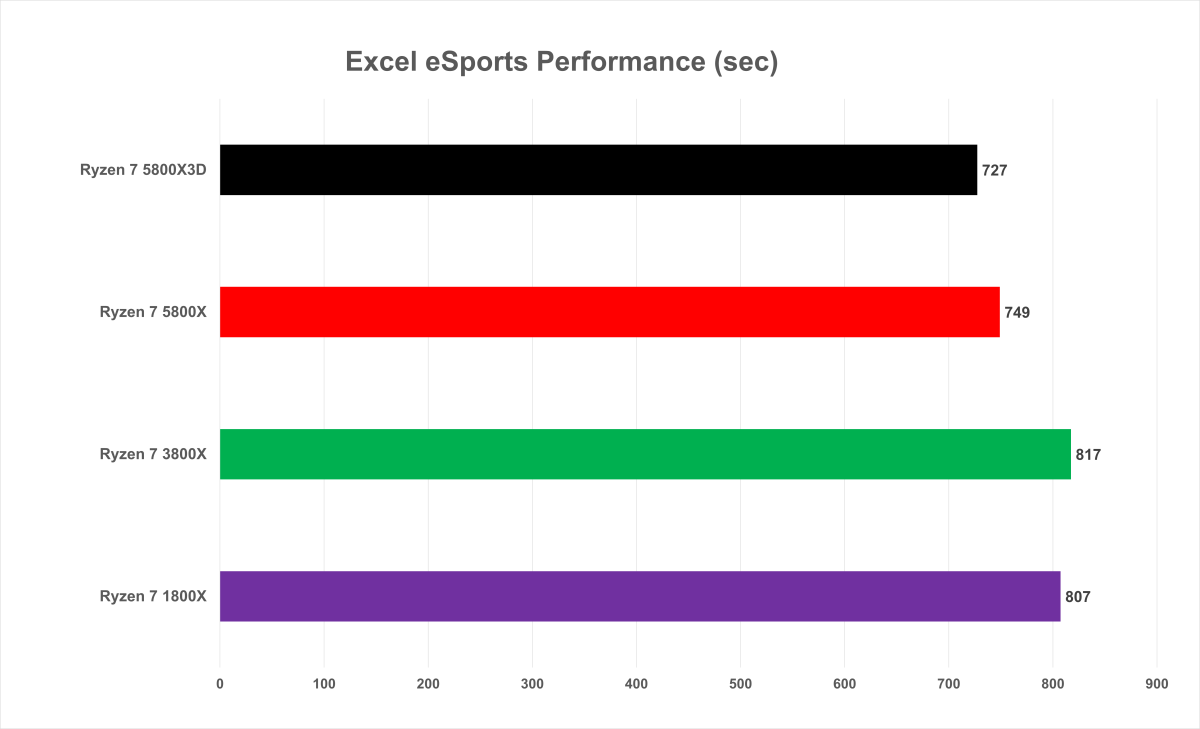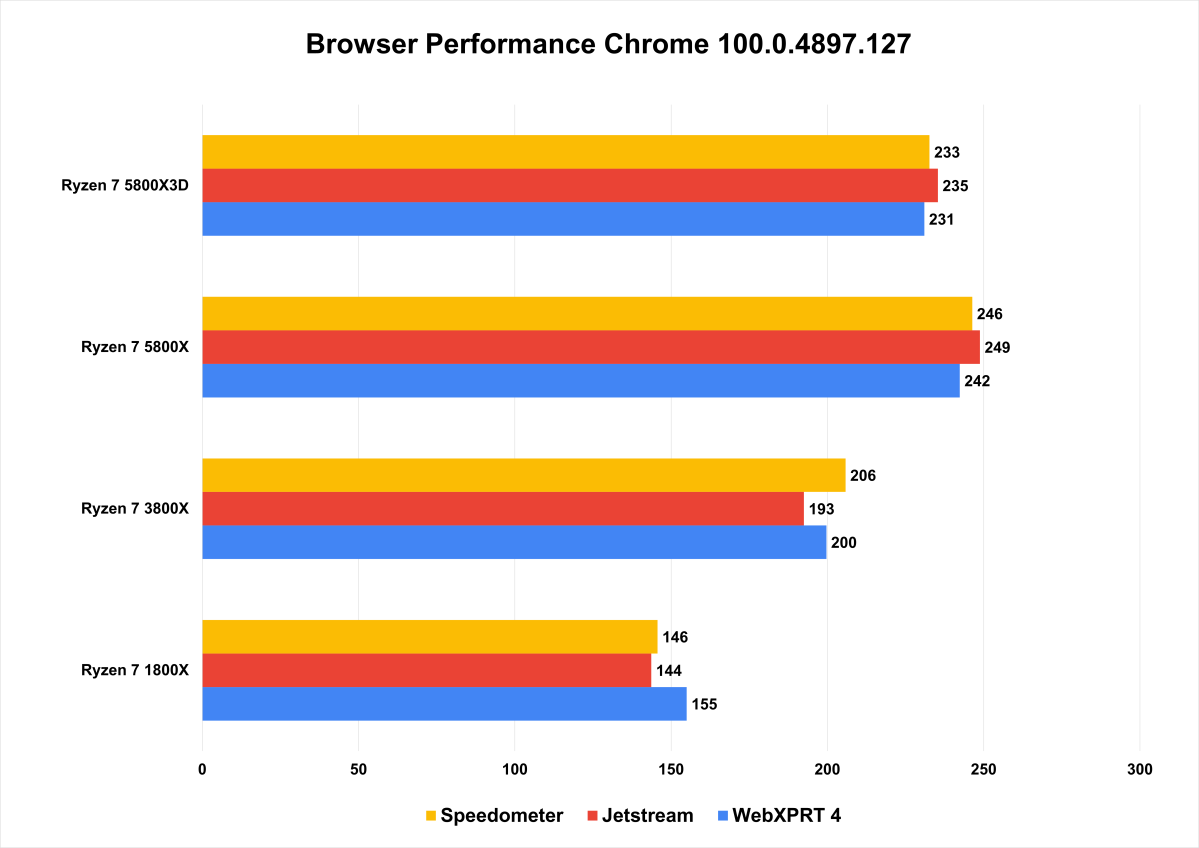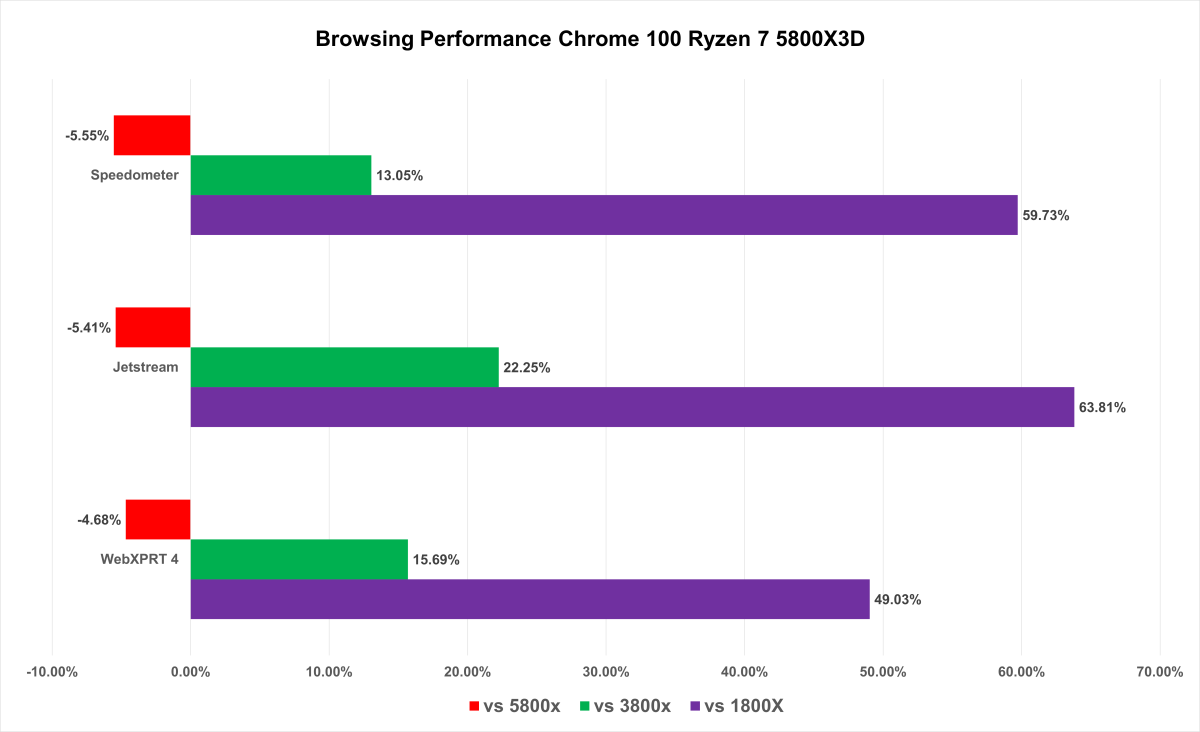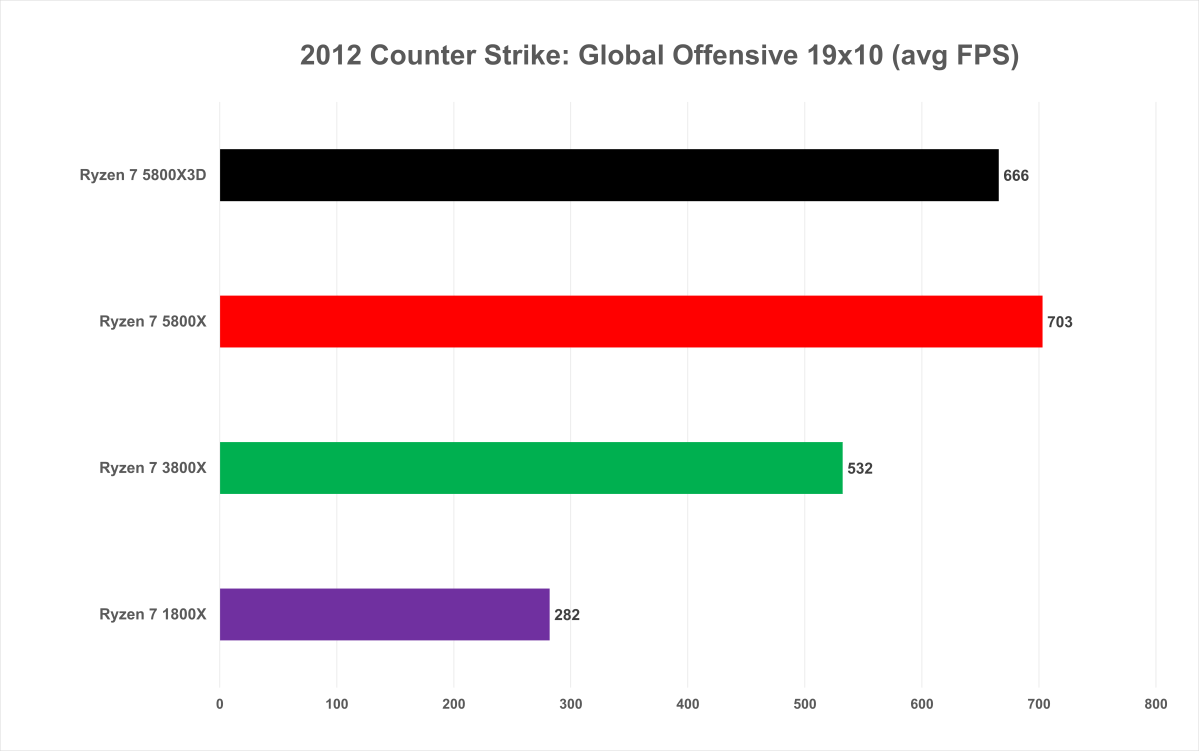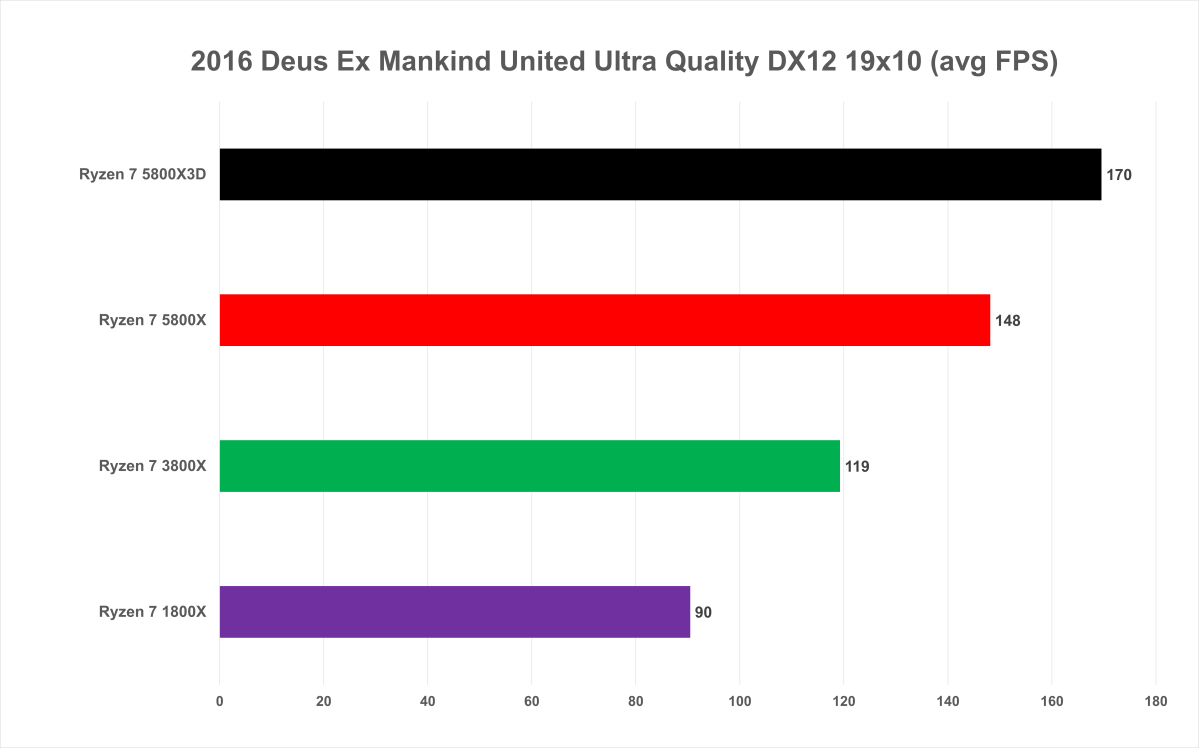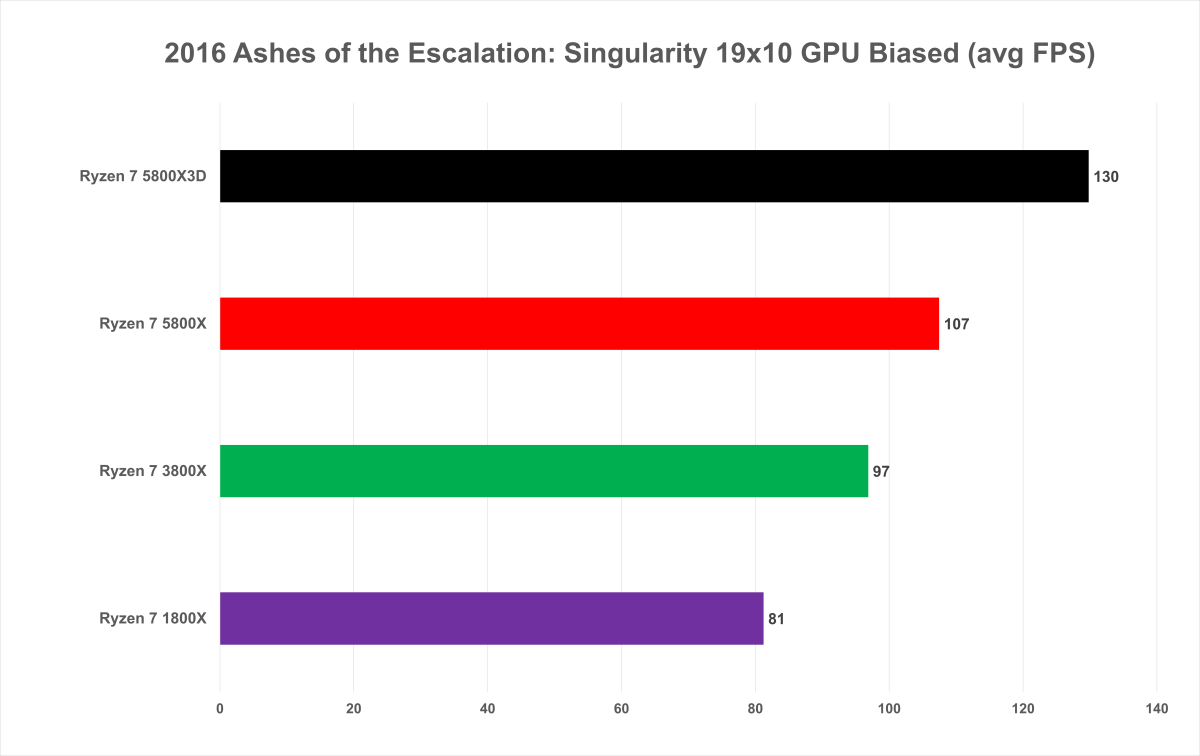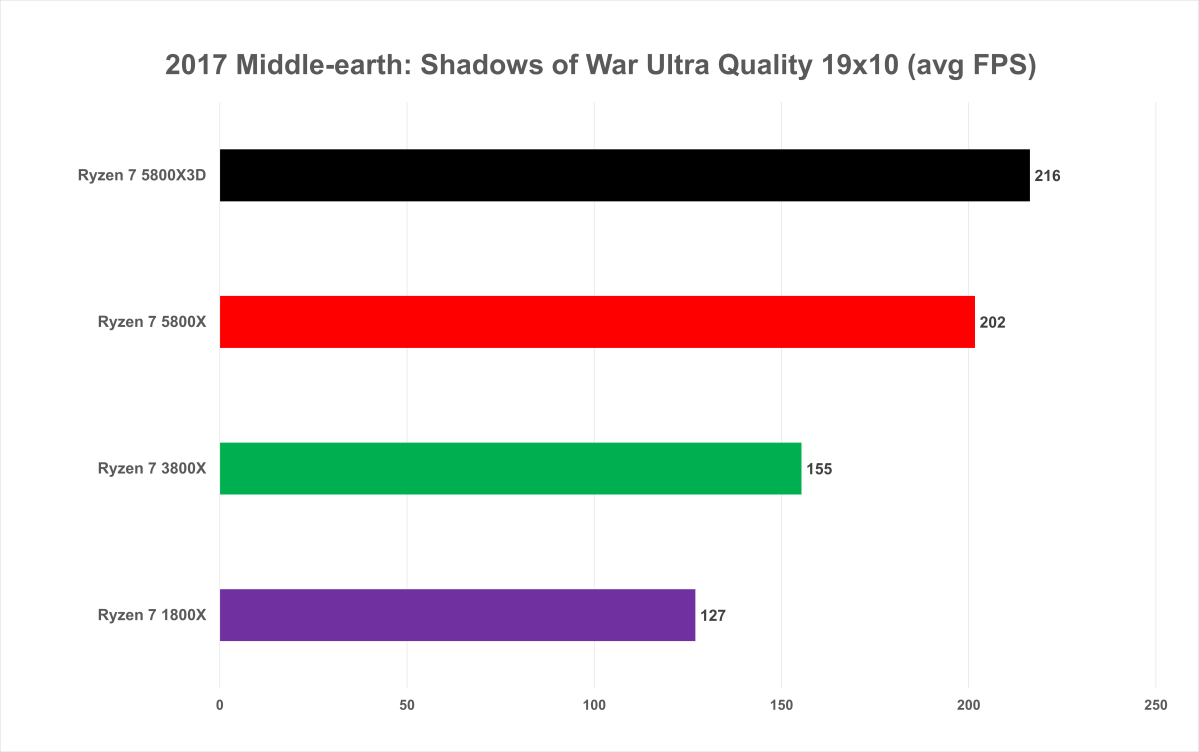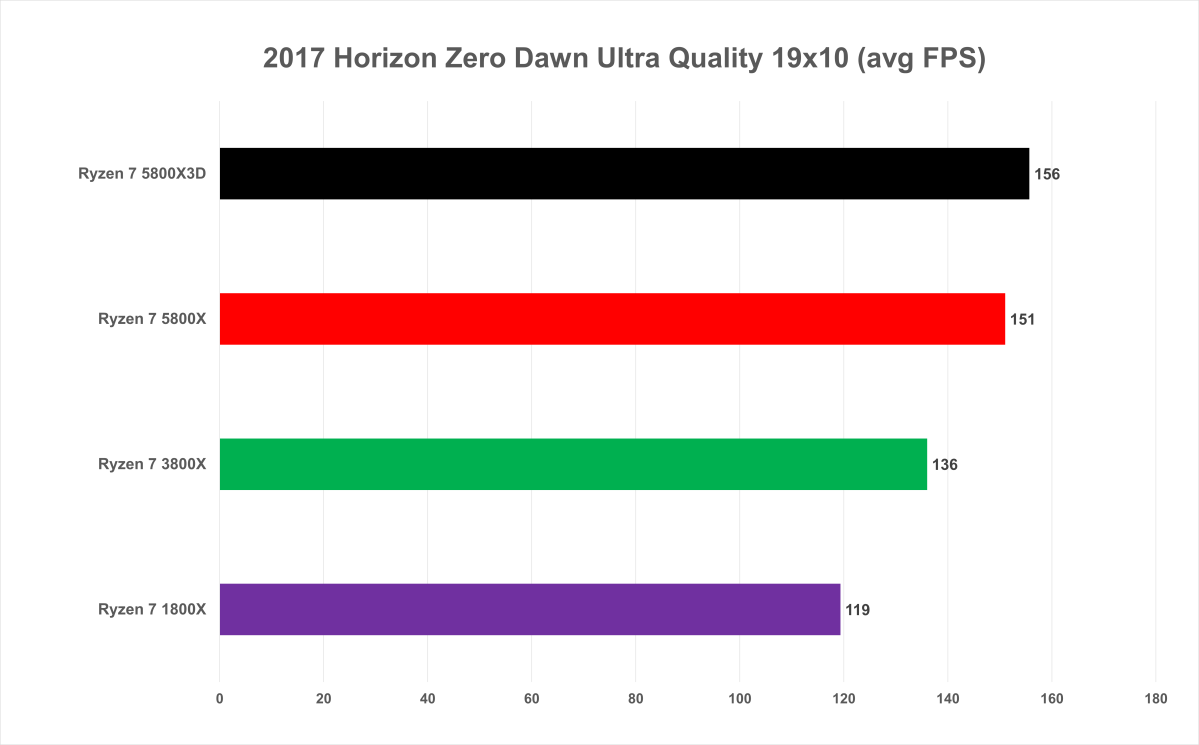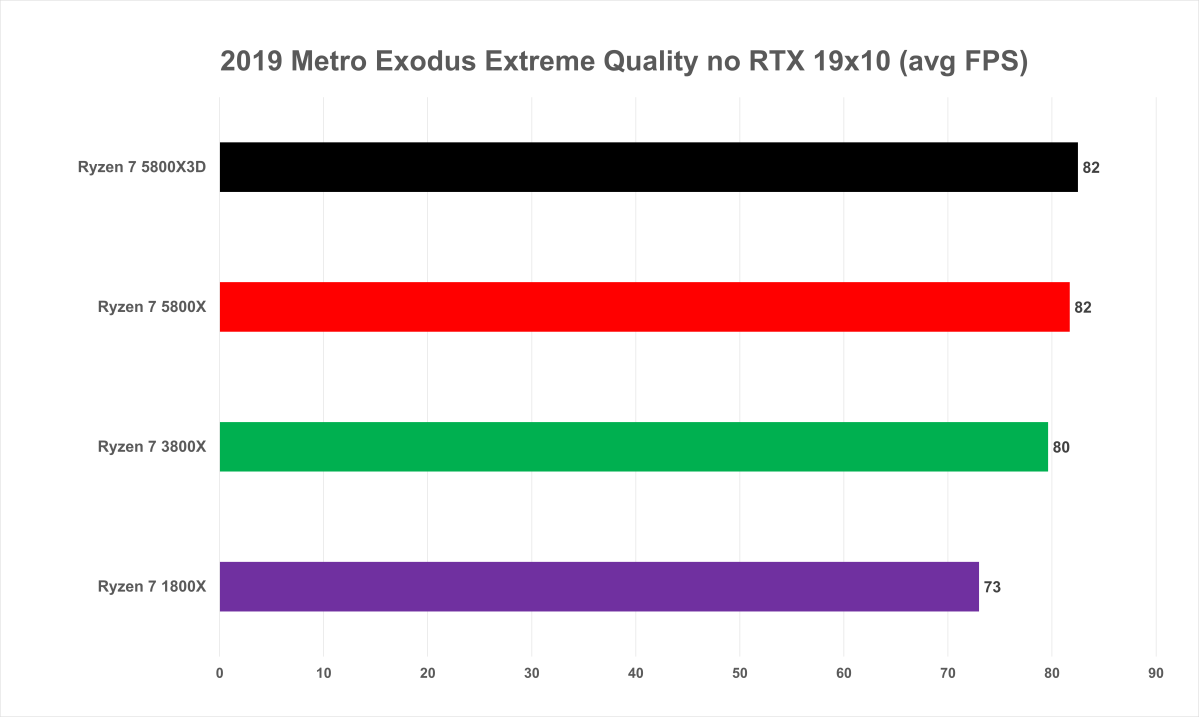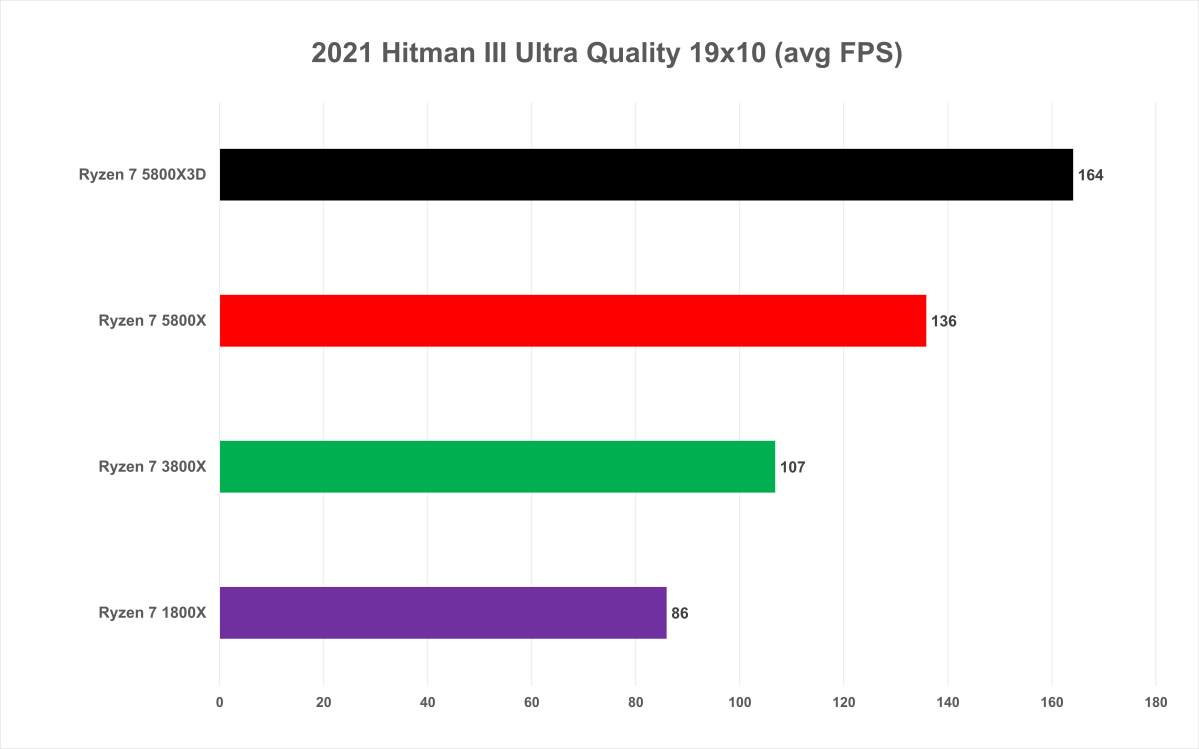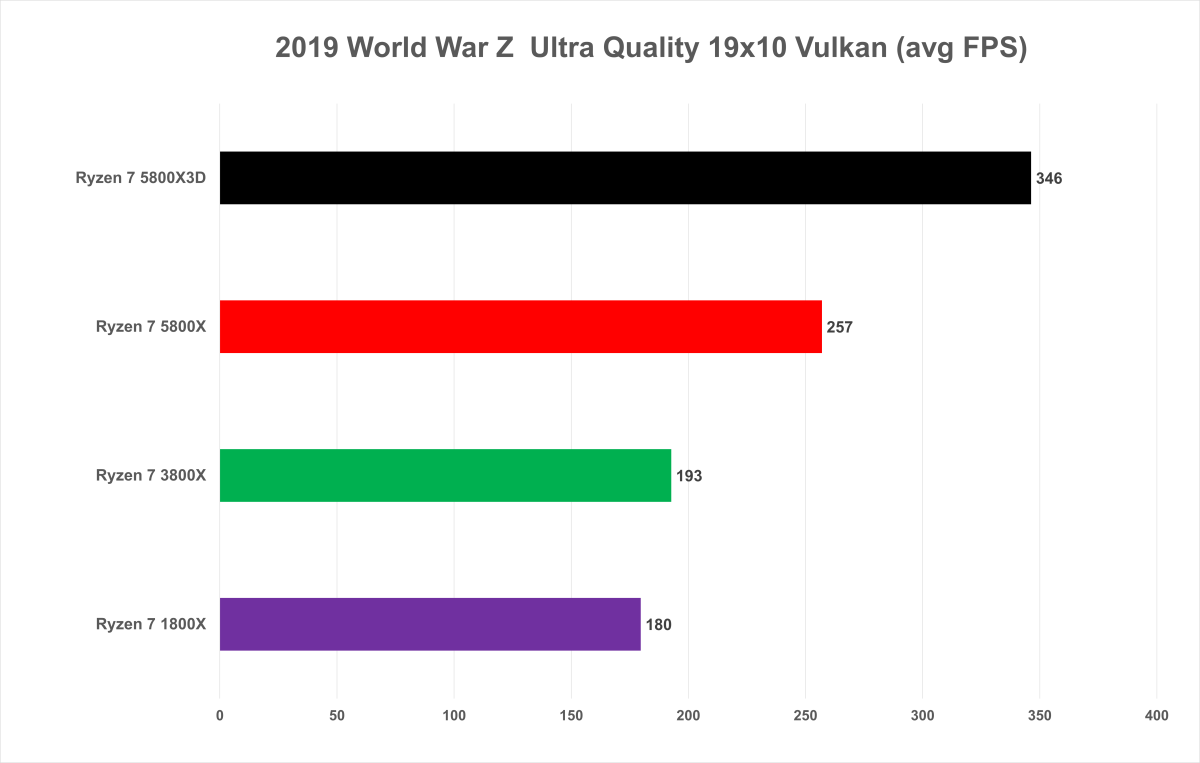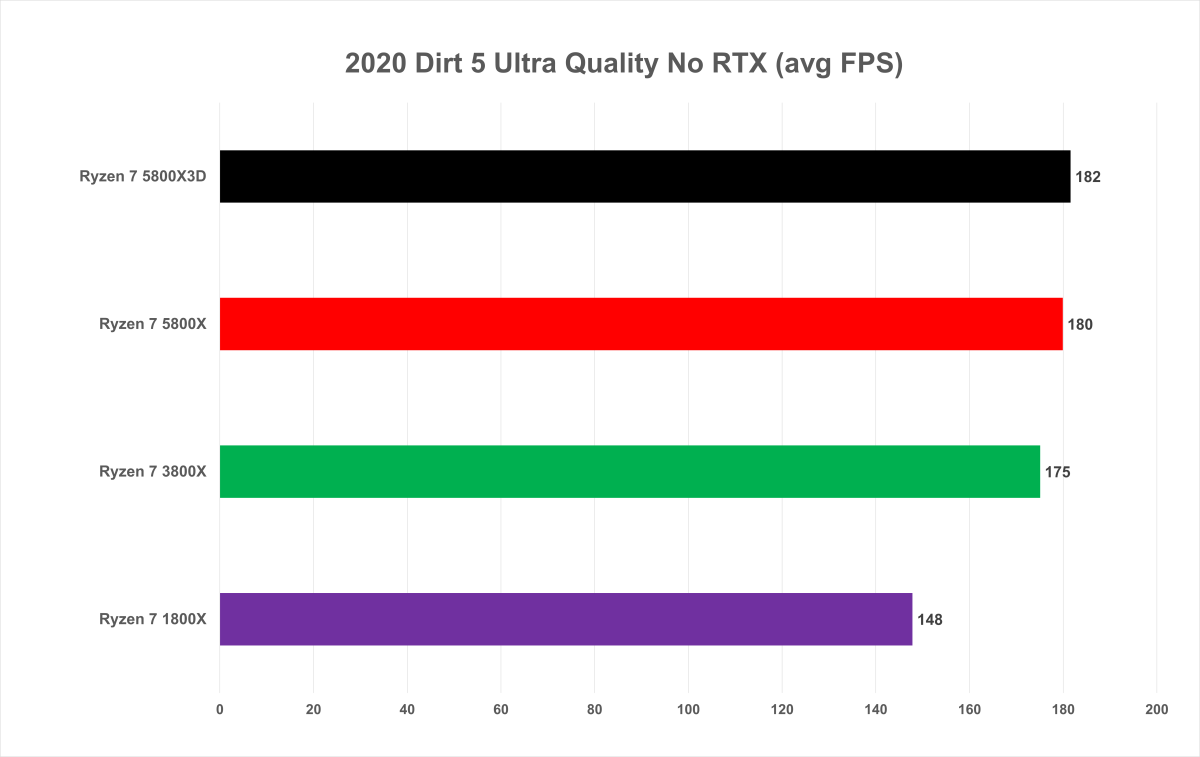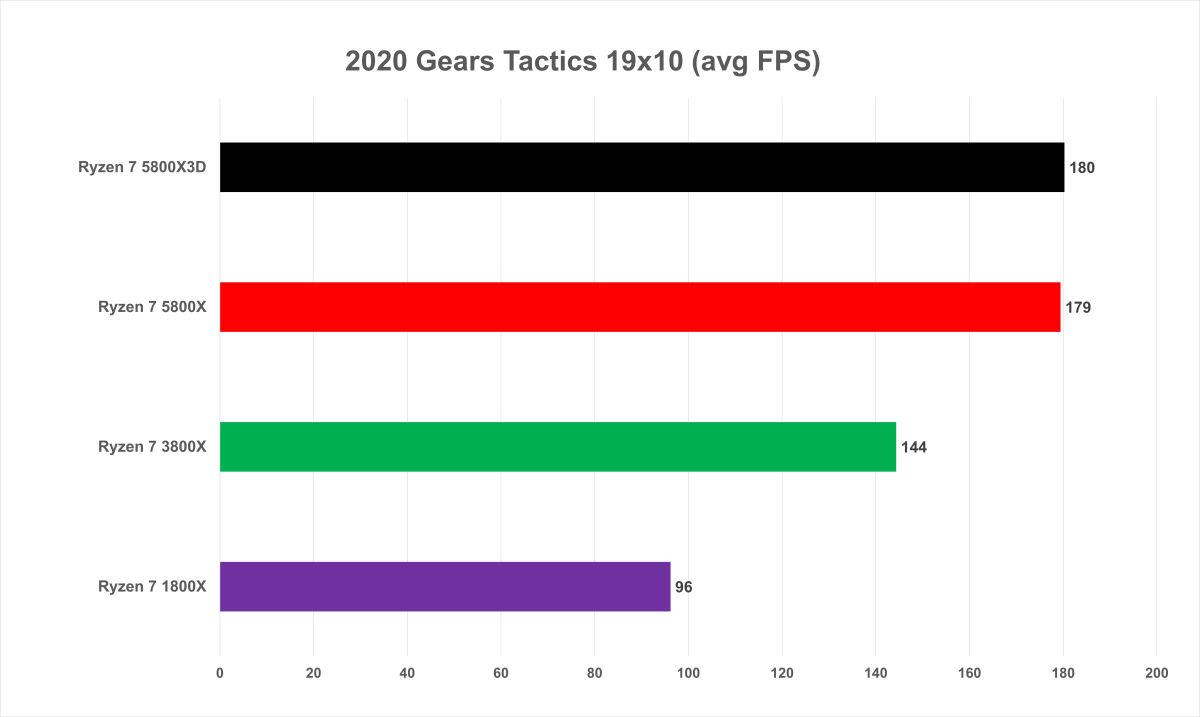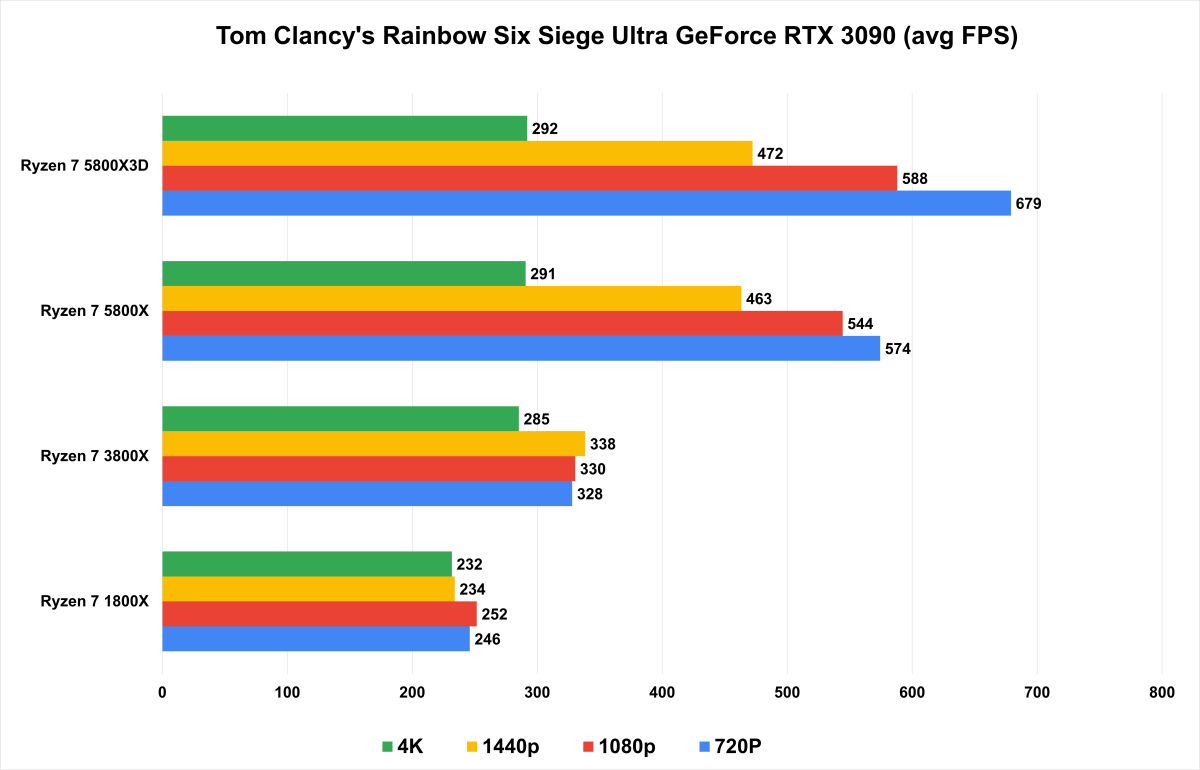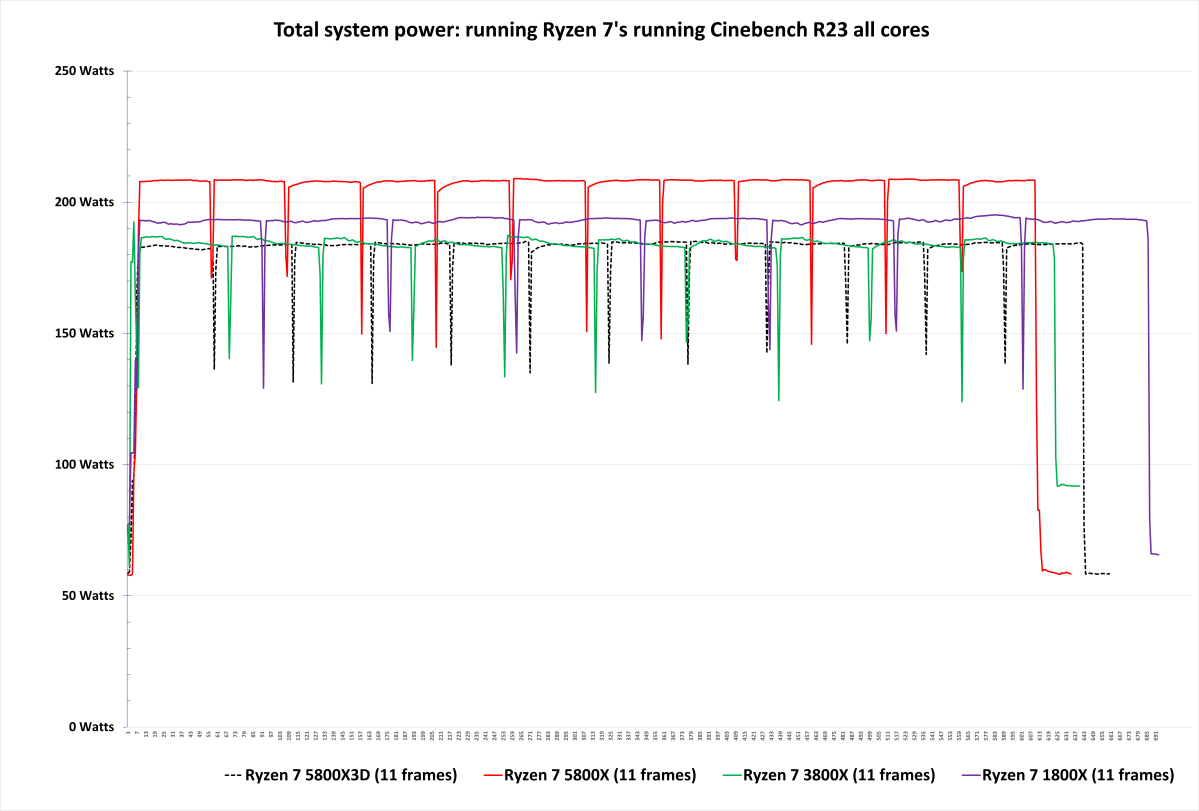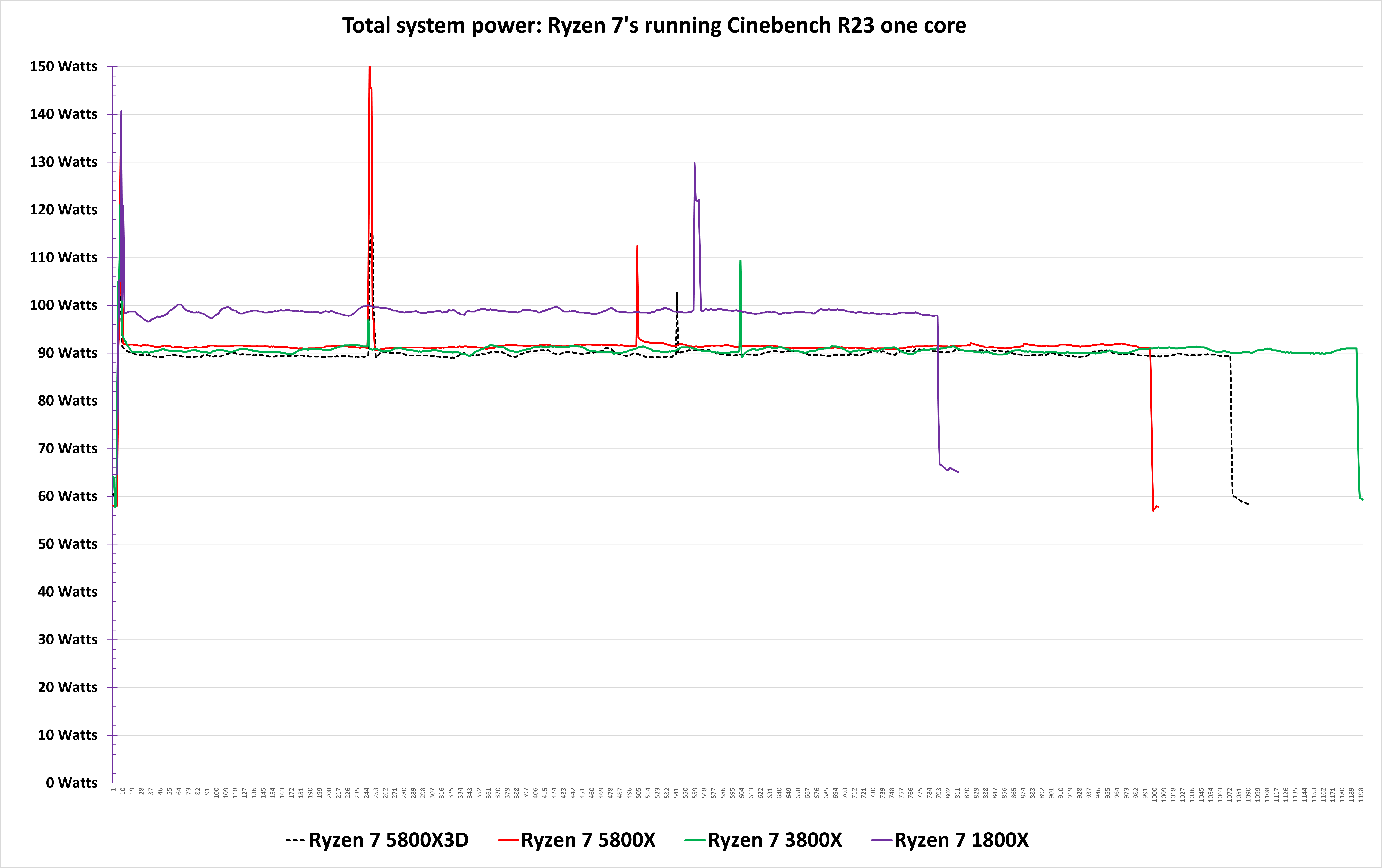AMD’s AM4 socket has been around five years now, and what a run it’s had. Since its launch alongside first-generation Ryzen CPUs, this socket has been a mainstay, with unprecedented support from Team Red that enables use of first-gen motherboards with current processors.
AM4 will soon cede center stage to AM5 later this year, but not everyone will need PCIe 5.0 or want to shell out for expensive DDR5 memory. That means Ryzen 5000 chips—the final batch of AM4 processors—could prove to be a much more cost-effective upgrade for people who want better performance.
That makes the recent launch of the Ryzen 7 5800X3D, AMD’s first CPU to boast its impressive new 3D V-Cache technology, a particularly tantalizing prospect. So when our sample crossed our desks, we decided to answer the question that many people would have. We cracked open our old Ryzen 7 1800X build, pulled the newer 3800X and 5800X off the shelf, and put them head to head with the 5800X3D, all to see just how much this new chip improves upon its predecessors—and to see how far AMD’s venerable AM4 has come since Ryzen’s early days.
How we tested
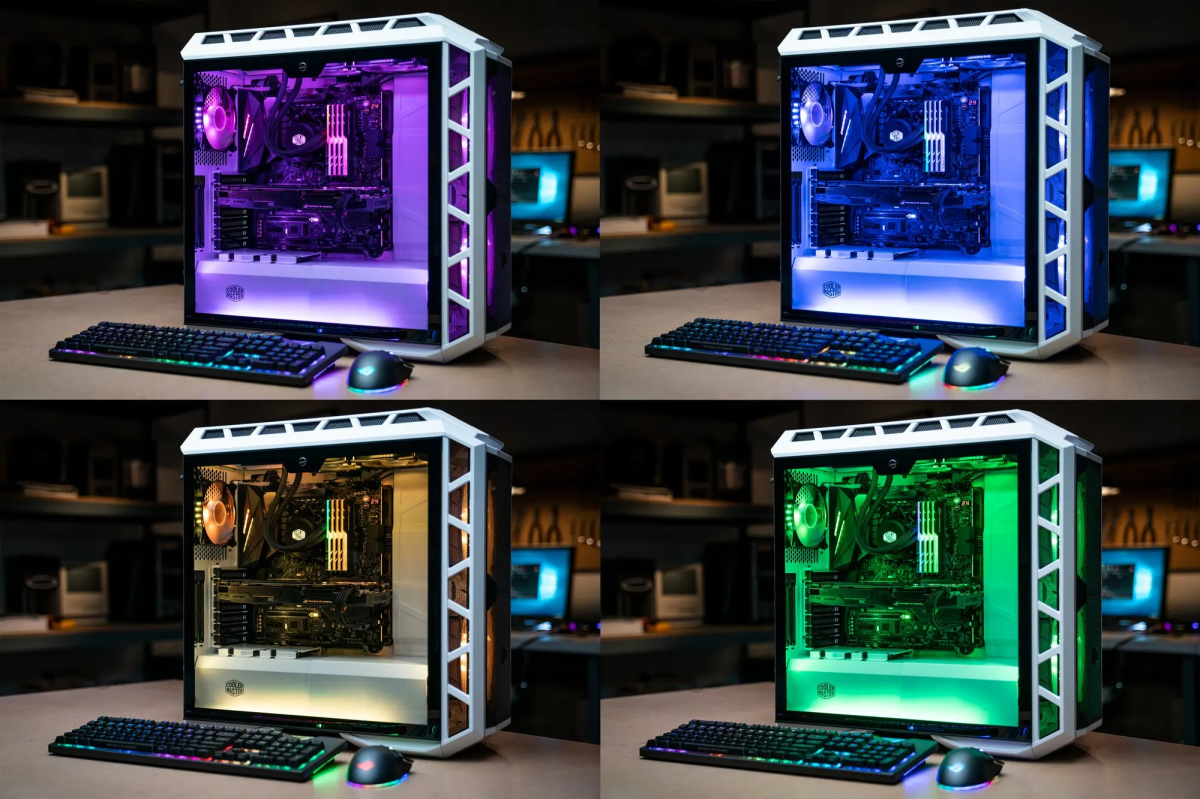
Adam Patrick Murray / IDG
For our benchmarks, we repurposed and upgraded this Ryzen 7 1800X build from 2018. Its parts list is as follows:
- CPU Cooler: Cooler Master MasterLiquid ML240L RGB
- Motherboard: Asus ROG Crosshair VI Extreme X370
- RAM: Corsair Dominator DDR4/3600 CL16 (2 x 16GB)
- SSD: Corsair MP600 Pro XT PCIe 4.0 SSD
- GPU: Nvidia GeForce RTX 3090 Founders Edition (driver ver. 512.15)
- PSU: Corsair RM750i 750W 80+ Gold
- Case: Cooler Master H500P White Mesh
- OS: Windows 10 21H2
The Asus X370 motherboard was updated to BIOS 8503 (Agesa v2 PI 1206), with PCIe Resizable BAR (a.k.a AMD’s Smart Access Memory) turned on. Core Performance Boost was on for the Ryzen 7 1800X, and Precision Boost Overdrive (PBO) was left on Auto for the 3800X, 5800X, and 5800X3D. The Cooler Master AIO cooler had its fans and pump set to 100 percent. Memory was clocked down to DDR4/2933 CL20 for full compatibility across all CPU generations. Windows 10 used the Best Performance power mode, with VBS and GPU hardware accelerated scheduling turned off. No encryption was enabled.
Our CPU line-up encompassed the Ryzen 7 1800X, 3800X, 5800X, and 5800X3D. Second-generation Ryzen chips weren’t included due to a lack of comparable part (AMD never produced a Ryzen 7 2800X) and a relatively mild difference between first- and second-gen Ryzen. We used the same build for all benchmarks, swapping the CPUs in and out of the motherboard to compile our set of benchmark results.

PCWorld
Performance results
As made clear when the Ryzen 7 5800X3D’s reviews published in late April, this processor has a clear, singularly defining purpose—gaming. (Not up to speed on the details? Here are 5 things you need to know about 5800X3D.) Compared to the standard Ryzen 7 5800X and contemporary Intel rivals like the Core i7-12700K and Core i9-12900K, it has a tangible impact at 1080p. It also offers smoother performance at higher resolutions like 1440p and 4K, with higher frame rates when looking at the worst one percent of performance (aka one-percent lows). However, The Ryzen 7 5800X3D is also weaker in productivity and content creation benchmarks thanks to clock speeds, which are slightly lower than the non-3D version.
That’s when talking about its contemporary rivals, though—the standard 5800X and Intel’s Core i7-12700K and Core i9-12900K. For these benchmarks, we’re examining the boost to performance you get compared to a Ryzen 7 1800X or 3800X, because it makes more sense to think of the 5800X3D as an upgrade chip, rather than the go-to for a new build.
And as you’ll see, ditching an older Ryzen CPU can result in mammoth performance gains, and not just in gaming.
Production
Longer bars indicate better performance (except for Blender, which is the opposite). You can click and drag each slide with your mouse (or swipe) to navigate between slides.
We’ll start with the production-oriented benchmarks, which are the 5800X3D’s weak spot compared to contemporary rivals—including its sibling, the standard 5800X. Just as in other 5800X3D reviews, this chip trailed behind the 5800X and its faster clock speeds in our rendering, video editing, and photo editing benchmarks.
But the slugfest between today’s chips isn’t the story we’re after here. Instead, we’re looking at how much performance you gain if you’ve got an older Ryzen chip. The answer is quite a dang lot if you’re a Ryzen 7 1800X owner. In test after test, you’re looking at sizable double-digit gains—between 29 and 60 percent for rendering, 27 percent in Premiere Pro, 50 percent for Photoshop and Lightroom.
For 3800X owners, an upgrade to the 5800X3D offers more modest gains—the biggest increases top out around the 15 percent mark. That’s not bad, but for most people who focus on this kind of use, not enough to compel a switch. A different, more affordable Ryzen 5000 series chip will be a better option.
Office productivity
Longer bars indicate better performance in Procyon 2.0. For the Excel eSports spreadsheet, it’s the opposite. You can click and drag each slide with your mouse (or swipe) to navigate between slides.
Most people don’t think much about performance in apps like Microsoft Word, but your processor can make a difference when creating slideshows, editing documents, or replying to email. And that’s what the aggregated scores for Procyon Office revealed. This benchmark, which measures performance in Word, Excel, PowerPoint, and Outlook, showed a whopping 57 percent improvement stepping up from an 1800X to a 5800X3D.
That said, those who push Excel to the max won’t see as much of a gain, as shown in the benchmark created for us by Excel eSports competitor Jason Moore. But the 5800X3D was never the right chip for that kind of core-hungry work—as just seen above in the production benchmark results. Also similar to the production benchmarks, going from a 3800X to a 5800X3D offers a far more modest increase in performance. Procyon Office posts an 15 percent uptick in its aggregated score.
Would you upgrade a chip solely for Microsoft Office? Possibly, but the $450 5800X3D wouldn’t be the best choice for that. But these results certainly contribute to enhancing the chip’s appeal.
Web browsing
Longer bars indicate better performance. You can click and drag each slide with your mouse (or swipe) to navigate between slides.
Speaking of benchmarks that further the 5800X3D’s appeal—web browsing benchmarks aren’t the numbers that turn heads, but this kind of computer use is the practical stuff no one talks about but affects everyone. You’re going to use your PC to browse the web for at least some portion of your day.
Upgrading from an 1800X to a 5800X3D will make your time spent in Chrome, Edge, or Firefox all but sing. The results in Speedometer, Jetstream, and WebXPRT 4 show performance increases ranging from about 50 to 60 percent. Switching from a 3800X to a 5800X3D isn’t as dramatic, with gains between 13 and 22 percent.
Again, you won’t be buying this chip to surf the web (well, perhaps you are, but most of us aren’t rolling in that kind of dough). But it’s nice to see that despite the lower performance in production tasks, the 5800X3D offers tangible benefits in other, more common types of PC use.
Gaming
Longer bars indicate better performance. More results can be found below. You can click and drag each slide with your mouse (or swipe) to navigate between slides.
You probably already guessed—the 5800X3D slays the 1800X in gaming, too. But the older 3800X sees more sizable gains in this area as well.
When looking at the average of the 17 games we benchmarked, the 5800X3D offers a staggering 72 percent performance increase compared to the 1800X at 1080p. For the 3800X, you’ll see a 38 percent bump. This outcome isn’t a total surprise if you’ve already read up on the 5800X3D—it clearly has an edge in gaming, even when pitted against contemporaries. (Note how it outdoes the standard 5800X by nine percent in those 17 games.)
You don’t lose this uptick immediately as you scale up in resolution, too. At 1440p, the 5800X3D still notably improved on the 1800X. In Shadow of the Tomb Raider, it was a 40 percent gain, while in Tom Clancy’s Rainbow Six Siege it was 101 percent. For the 3800X, it was 15 percent for Shadow of the Tomb Raider and nearly 40 percent for Rainbow Six Siege.
Longer bars indicate better performance. You can click and drag each slide with your mouse (or swipe) to navigate between slides.
Once you become GPU bound, the 1800X does begin to hold its own in some games. Moving up to a 5800X3D at 4K resolution is a mere two percent improvement in Shadow of the Tomb Raider. (For the 3800X, it’s a scant one percent.)
But as you can tell from the discussion of individual benchmarks, results can vary, and wildly at that. Switching from an 1800X to a 5800X3D in Metro Exodus at 1080p only nets a relatively mild improvement of 13 percent. But in Rainbow Six Siege at 4K? 26 percent.
So while replacing an 1800X with a 5800X3D will supercharge your 1080p gaming on average, gamers who play just a few games (or the same game regularly) should pay attention to individual benchmark results. That’s especially so if you play more often at higher resolutions.
Power draw
You can click and drag each slide with your mouse (or swipe) to navigate between slides.
We’ll take a quick look at power draw before wrapping up these benchmark results. This information is important if you care about how much electricity your system consumes and/or heat generated. The former matters if you live somewhere with expensive rates, and the latter is relevant if you live in a warm climate or have a PC case with limited cooling.
For this test, we ran Cinebench R23 on its default setting, which is a 10 minute loop of the render. Of the chips in our lineup, the 5800X3D and 3800X drew a bit less power than the 1800X, which still came in under the 5800X’s demands. The 5800X3D did have a few more spikes than the 3800X in the single-core benchmark, but not many overall.
Final thoughts
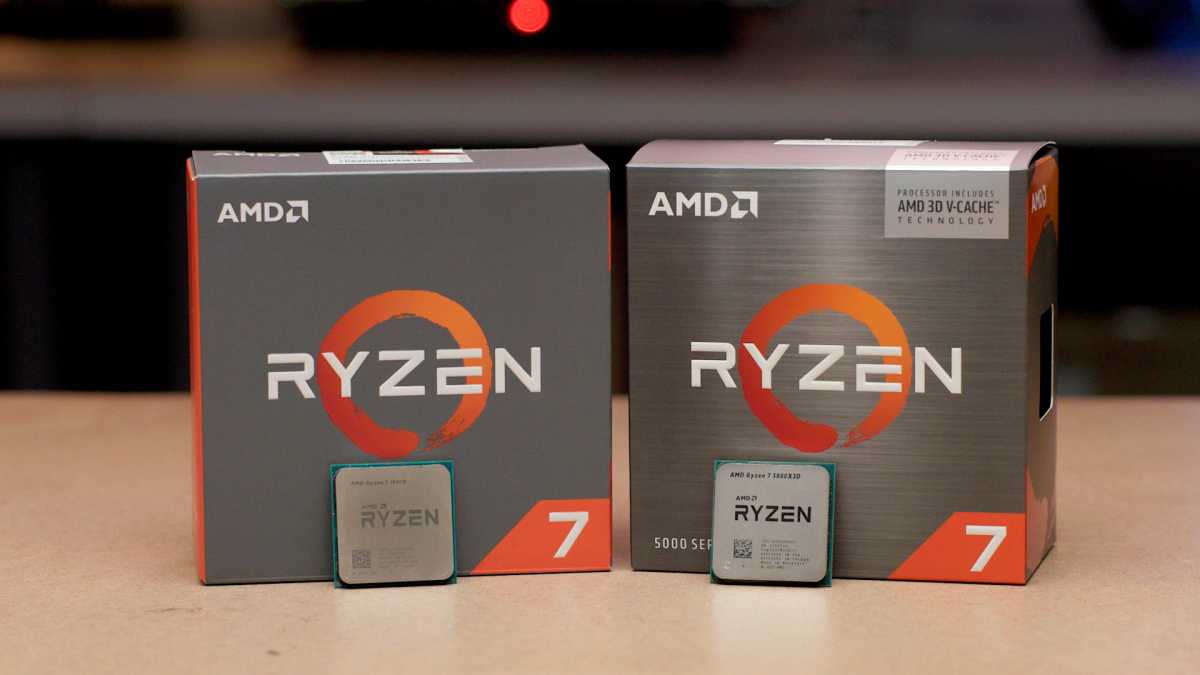
Willis Lai / IDG
As we just saw, Ryzen 5000 smokes first-generation Zen. It posts a decent boost over Zen 2 as well. But the 5800X3D doesn’t settle the question of whether or not to upgrade on AM4. In fact, it actually complicates things a little more.
The Ryzen 7 1800X may seem pathetic based on some of the benchmark results above, but it still faithfully serves in a number of PCs, including the one still used by PCWorld’s very own Brad Chacos. Most owners have only been curious about an upgrade—not desperate. They’ve wondered about switching to Intel, waiting for Ryzen 7000, and if they have a compatible motherboard, going with a Ryzen 5000 chip.
The 5800X3D and its $450 price tag adds one more fork to the Ryzen 5000 decision tree, rather than being a solution that overwrites the existing 5600X, 5800X, and 5900X. You have to really think about your budget and how you use your PC. Performance isn’t the issue. Rather, if the point of dropping in a new AM4 CPU into your system is to boost performance while saving cash, another Ryzen 5000 chip could offer more bang for your buck. A 5600X ($200 street price) could make more sense for a 4K gamer, while a 5900X ($390 street price) offers more firepower for content creators.

Gordon Mah Ung / IDG
That said, choosing the 5800X3D is still more cost-effective than replacing your processor, motherboard, and possibly also memory—as you’d have to do with an upgrade involving an Intel processor or Ryzen 7000. Moreover, the fact that you even have these granular choices is incredible. AM4 has lasted four CPU generations with full backward compatibility. Meanwhile, the competition can’t always be relied upon to last two generations. To go from a Ryzen 7 1800X and its early democratization of core count to a Ryzen 7 5800X3D and its face-melting performance in games is a simple CPU replacement. That’s it. You don’t have to swap anything immediately, either—you’ll probably be able to snag the 5800X3D for less once Ryzen 7000 launches later this year. PC building was not like this before.
Speaking of Ryzen 7000, AM5 will be around for a while, too. During a CES 2022 interview, AMD CEO Dr. Lisa Su said that as with AM4, we should expect AM5 to be a long-lived platform as well. No exact number of years were given, but with the precedent set, here’s to hoping for a continued legacy of generous support.
Editor’s note: This article was updated on 6/10/2022 to include our YouTube retrospective video.


